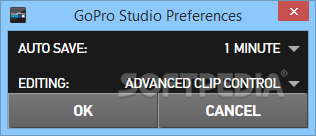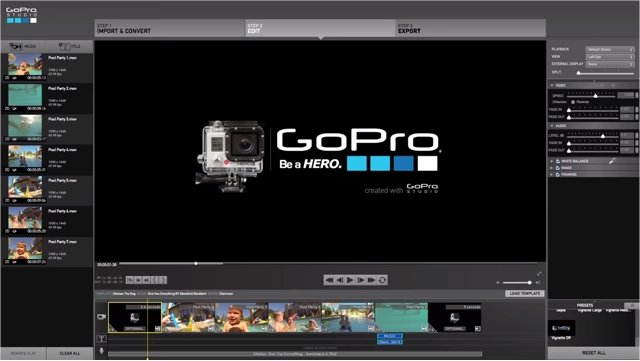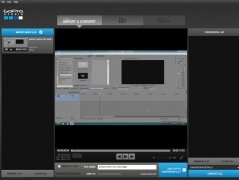


The GoPro Studio desktop application and the GoPro mobile app are free software.

Once you get accustomed to GoPro Studio’s interface, once you go through the tutorials and you figure out how to use this application, you’ll be able to perform the following tasks: import media from your GoPro camera and view it trim unnecessary elements from your GoPro media and convert said media edit and export videos. When you’re done installing GoPro Studio on a PC that meets these system requirements, when you launch GoPro Studio for the first time, an Import Tutorial will show up and explain how to import GoPro media, how to trim your footage, how to name your trimmed clip and choose where to store it, how to add your clip to the conversion list, and how to convert your footage into an editing friendly format.Īlongside the Import Tutorial there’s an Edit Tutorial that presents several edit templates, explains how to drag media into the storyboard, explains how to use multiple controls to edit your clip, and explains how to export your video. The system requirements for running it on a Windows PC are: Intel Core 2 Duo processor (Intel Quad Core i7 or better recommended) graphics card that supports OpenGL 1.2 or later (Intel HD4000 or better recommend), 4GB or RAM or more 1280x800 screen resolution, QuickTime 7.6 or newer, Windows 7 or newer. GoPro Studio, as I’ve just mentioned, is available for Microsoft’s Windows operating system and for Apple’s Mac OS X.

And then there’s GoPro Studio, a desktop application for Windows and Mac that can be used to import, view, and edit GoPro media. There’s a GoPro mobile app for iOS, Android, and Windows Phone that can be used to remotely control a GoPro camera, view content shot with a GoPro camera, and share said content on the GoPro Channel. GoPro is best known for making “the world’s most versatile cameras.” But did you know that the company makes software as well? If you didn’t, let me clear things up for you.


 0 kommentar(er)
0 kommentar(er)
